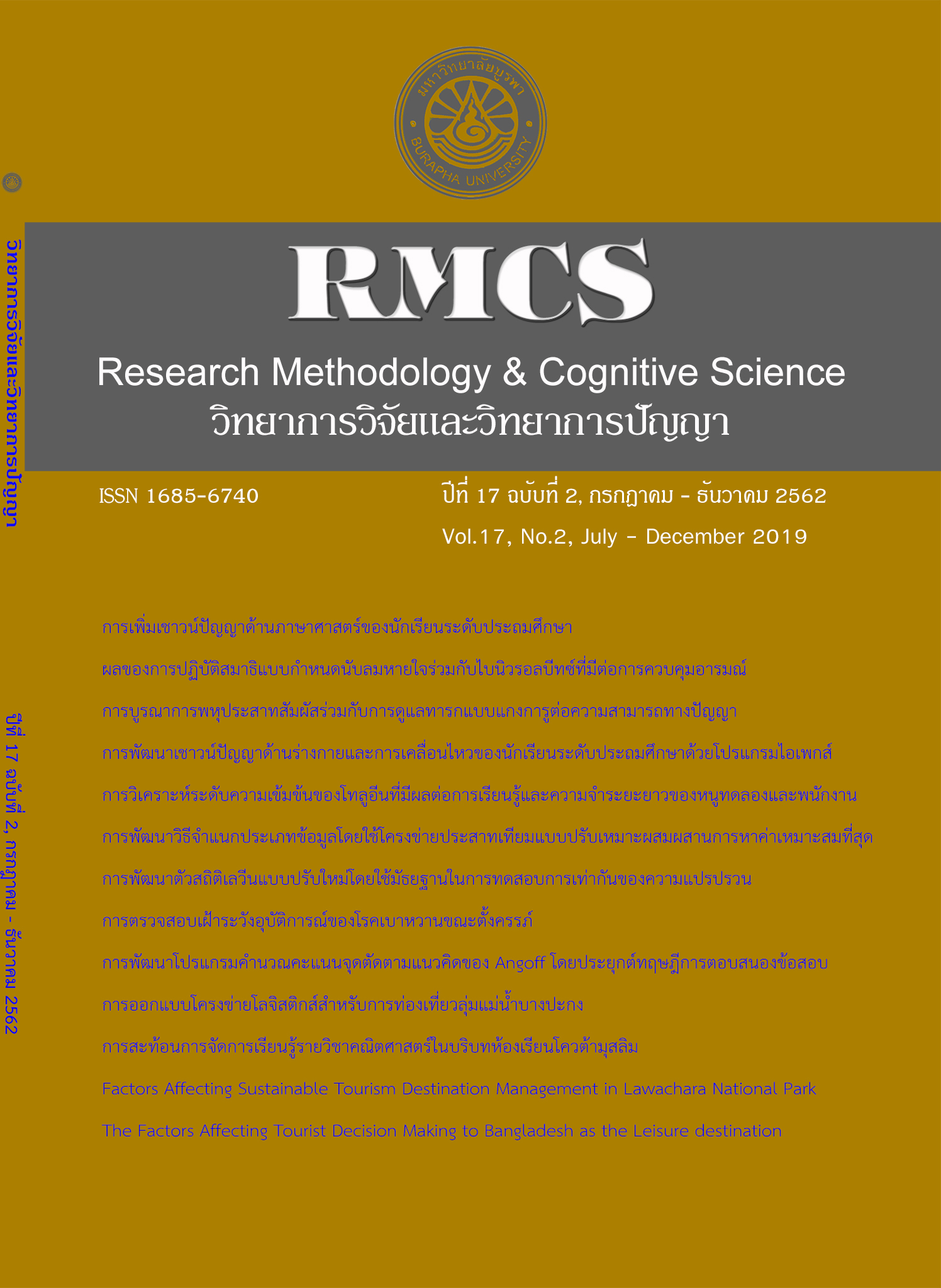The Factors Affecting Tourist Decision Making to Bangladesh as the Leisure Destination: A Case Study of Cox’s Bazar Sea Beach
Main Article Content
Abstract
This research examines the tourism components that are affecting Tourists decision making to visit Cox’s Bazar sea beach, Bangladesh.The objectives of the research are 1) to observe the tourism components affecting the tourist decision making to visit Cox’s Bazar sea beach and 2) to examine the relationship between the tourism components and tourist decision making to visit Cox’s Bazar sea beach. The study conceptualized that the components, that is, attraction, accessibility, accommodation, amenity, and activities would affect the tourist at the time of taking decision to visit Cox’s Bazar sea beach. This study followed the quantitative methodology. Questionnaires were used as research tool. Data were collected from the questionnaires with a participation of 385 respondents of domestic tourists who visited Cox’s Bazar, Bangladesh. According to the developed conceptual framework from the hypotheses were formed. After analyzing the collected data, the researcher found that all the components supported the hypotheses and thus influenced the decision making of the tourists to visit the destination. The future researchers will find the study useful for generating new ideas.
Article Details
References
Cetinski, V., & Juričić, B. (2005). The role of quality and eco-labelling systems in tourist destination benchmarking (case study: Island of Cres). Tourism and Hospitality Management, 11(2), 79-92.
Damborský, M., Wokoun, R., Kourilová, J., & Krejčová, N. (2012). The competitiveness of regions in the EU. Retrieved from http://www- sre.wu.ac.at/ersa/ersaconfs/ersa12/e120821a Final00790.pdf
Dodds, R., & Holmes, M. R. (2019). Beach tourists; What factors satisfy them and drive them to return.Ocean & Coastal Management, 168, 158-166.
Fahmida, S. R, & Bari, E. (2015). Economics of improving hospitality management in Bangladesh through employee satisfaction. Journal of Emerging Trends in Economics and Management Sciences (JETEMS), 6(4), 276-284.
Gunn, C. (1988). Tourism planning. New York: Taylor and Francis.
Hankinson, G. (2004). Repertory grid analysis: An application to the measurement of destination images. International Journal of Nonprofit and Voluntary Sector Marketing, 9(2), 145-153.
Hassan, M. R., Ullah, M. M., & Chowdhury, M. S. A. (2013). Impact of tourism in Bangladesh economy. World Journal of Social Sciences, 3(6), 45-57.
Huete-Alcocer, N., Martinez-Ruiz, M. P., López-Ruiz, V. R., & Izquiedo-Yusta, A. (2019). Archeological tourist destination image formation: Influence of information sources on the cognitive, affective and unique image. Frontiers in Psychology, 10, 2382.
Jaskiewicz, P., Combs, J. G., & Ketchen Jr, D. J. (2019). Moving toward a generalizable theory of business-owning families’ reference point shifts by embracing family differences. Academy of Management Review, 44(4), 916-918.
Mamun, M. A. A., Hasan, M. K., & Hossain, S. A. K. M. (2013). Image of Cox’s Bazar beach as a tourist destination: An investigation. International Review of Business Research, 9(5), 122-138.
Ni, C. C. (2000). The analysis on tourists' decision-making to Island tours: A case study of Penghu Islands. Journal of Outdoor Recreation Study, 13(4), 27-29.

